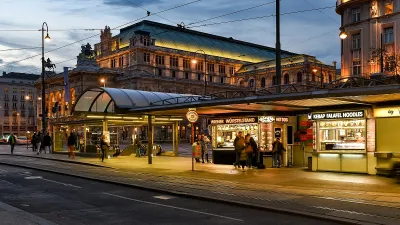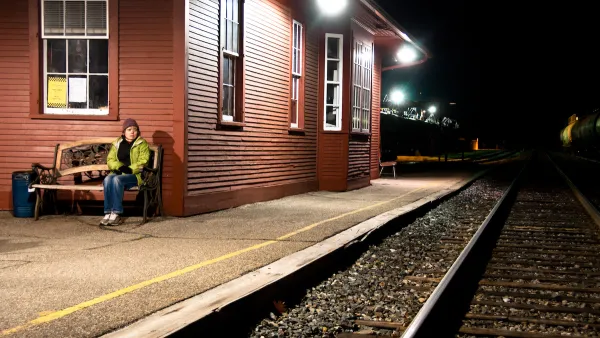An argument for embedding a feminist analysis into planning practice.

Women and other marginalized groups experience cities differently, writes Marion Roberts. "Experiences of sexual harassment and violence intersect with other social inequalities, especially those of class, race, disability and sexual orientation. To track all of these indicators through an urban planning and design agenda can be bewildering, drawing attention away from deep-seated, long-standing 'structures' of inequality that become embedded in the built environment and in the mindsets of politicians and planners."
Roberts calls for "A socialist-feminist approach [that] cuts through this technical complexity by demanding that the work of reproduction, of caring work and domestic responsibilities, typically undertaken by women and girls, be recognised and valued in equal measure to that of production. "
The article provides examples from several international cities that have implemented planning interventions using this approach. Vienna, the only city to fully embrace the concept, "takes accommodating the strains of reconciling waged work, housework and caring responsibilities as a central tenet of its planning strategy. Its development plan is based on a 'city of short distances' and providing for everyday life."
For example, the new urban extension to Vienna, Aspern Seestadt, connects its projected 20,000 households to Vienna city centre with a fast metro link, and includes different employment opportunities within the urban extension, as well as sufficient schools, nurseries, medical services, Austria’s first managed high street, hospitality and leisure facilities, facilities for refugees and a new urban park around the lake.
"In Mexico City, a programme entitled 'Safer Streets, Safer Trails' targeted at women has introduced better lighting, security cameras and alarm buttons over 200 kilometres of streets and paths. Combined with other improvements to public spaces, this has reduced street crime against women by 29 per cent and raised perceptions of safety in the period 2018-2021 by 40 per cent," Roberts writes.
Far from just improving the lives of urban women, Roberts argues that this approach to building cities can ensure fair and equitable access to amenities and economic opportunities for everyone.
FULL STORY: Building feminist cities

National Parks Layoffs Will Cause Communities to Lose Billions
Thousands of essential park workers were laid off this week, just before the busy spring break season.

Retro-silient?: America’s First “Eco-burb,” The Woodlands Turns 50
A master-planned community north of Houston offers lessons on green infrastructure and resilient design, but falls short of its founder’s lofty affordability and walkability goals.

Delivering for America Plan Will Downgrade Mail Service in at Least 49.5 Percent of Zip Codes
Republican and Democrat lawmakers criticize the plan for its disproportionate negative impact on rural communities.

Test News Post 1
This is a summary

Test News Headline 46
Test for the image on the front page.

Balancing Bombs and Butterflies: How the National Guard Protects a Rare Species
The National Guard at Fort Indiantown Gap uses GIS technology and land management strategies to balance military training with conservation efforts, ensuring the survival of the rare eastern regal fritillary butterfly.
Urban Design for Planners 1: Software Tools
This six-course series explores essential urban design concepts using open source software and equips planners with the tools they need to participate fully in the urban design process.
Planning for Universal Design
Learn the tools for implementing Universal Design in planning regulations.
EMC Planning Group, Inc.
Planetizen
Planetizen
Mpact (formerly Rail~Volution)
Great Falls Development Authority, Inc.
HUDs Office of Policy Development and Research
NYU Wagner Graduate School of Public Service





























